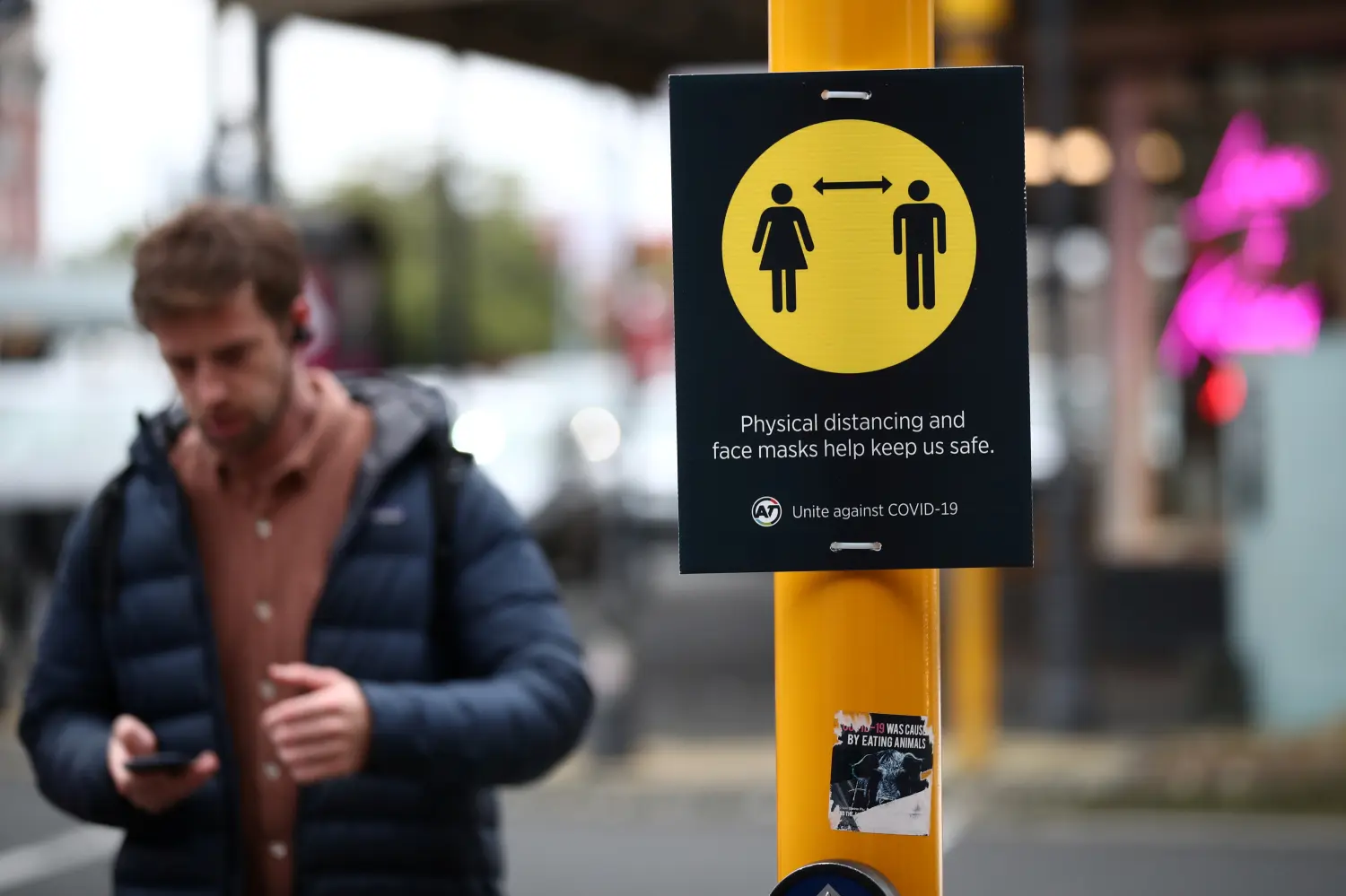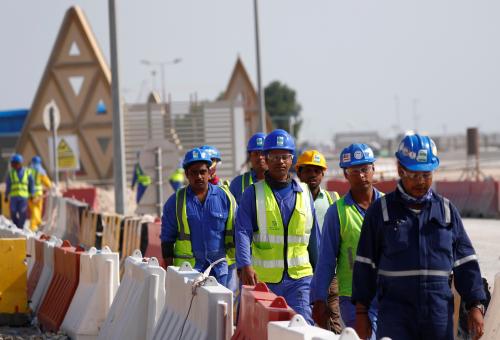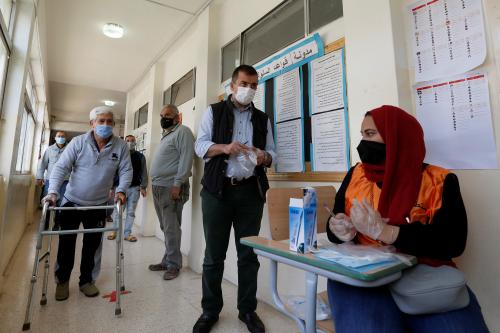Content from the Brookings Doha Center is now archived. In September 2021, after 14 years of impactful partnership, Brookings and the Brookings Doha Center announced that they were ending their affiliation. The Brookings Doha Center is now the Middle East Council on Global Affairs, a separate public policy institution based in Qatar.
The Middle East and North Africa (MENA) COVID-19 Response Project focuses on governmental public health and economic policy responses designed to combat the spread of the COVID-19 pandemic in MENA countries. In this regard, we have reviewed efforts by countries outside the MENA region to combat the virus as a means of informing our work more broadly. Here, the successful case of New Zealand serves as a best practice comparator for MENA countries covered in this series. The inclusion of New Zealand in this series aims to help MENA policy makers to improve response protocols to pandemics and other crises.
From a global perspective, New Zealand stands out regarding the efficacy of its approach to combatting the spread of COVID-19, having effectively eliminated the virus from its territory. Towards this end, the country resorted to a draconian lockdown of its borders and its domestic economy. Following a month during which the country shut down all nonessential businesses, restricted internal travel, and banned social gatherings, New Zealand was able to rapidly reopen its economy.
Following a second outbreak in August, New Zealand was able to control the outbreak through a targeted lockdown of Auckland. Having reopened the economy in June, the country did return to a heightened alert level in August, but it has since returned to a vigilant but full opening. Throughout the pandemic, New Zealand has continued to build its capacity for testing and contact tracing. Coupled with tight quarantines for returning New Zealanders, this has helped the country control the virus and prevent further outbreaks.
New Zealand confirmed its first imported COVID-19 case on February 26, 2020. A month later, with only 100 confirmed cases, the country went into lockdown. By mid-May, however, authorities declared that the virus had been eliminated in terms of community spread, and the country reopened on June 9, having had no new cases reported for 18 days. Even with a sizeable new outbreak of the virus in August 2020, New Zealand has seen relatively few confirmed cases and deaths associated with the virus. By January 15, 2021, the country had only had a total of 2,246 confirmed cases (0.04 percent of the population). There have been only 25 deaths.
New Zealand’s efforts to combat the spread of the virus were orchestrated using an all-of-government approach. Led by an all-of-government controller, the nation’s Ministry of Health and the national emergency response infrastructure effected a coordinated governmental effort that included all ministries and government agencies. The all-of-government approach was organized along specific workstreams, allowing the government to mount effective responses for disease treatment, border controls, enforcement of physical distancing mandates, social welfare and worker supports, economic stimulus, supply chain management, trade, and foreign relations. While the New Zealand government’s policy response to COVID-19 was both stringent and comprehensive, the government was able to secure popular support for these efforts through an effective and transparent effort to keep the public informed about the pandemic and the response.
Despite its success in curbing the spread and impact of the virus in terms of the public health response, New Zealand has not been immune to the economic toll imposed by its own economic closure, and the broader global economic slowdown. With gross domestic product (GDP) declining by 12.2 percent in the second quarter, New Zealand is experiencing its first recession since the global economic downturn in 2008. The impact has been most dramatically felt by the country’s important tourism sector, which made up nearly 6 percent of the economy in 2019. The country has only avoided a huge increase in unemployment through the provision of significant wage subsidies.
New Zealand’s economic response to the pandemic has focused on long-term government borrowing to fund an extensive package of financial supports for workers and businesses. These include an initial emergency package providing the above-mentioned wage subsidy, support for businesses ranging from tax reductions and deferrals, to eased loan terms to targeted debt funding agreements. The 2020 budget passed in May built on these efforts, funding further wage subsidies, support for loans, business development services, infrastructure investments, and support for workers, including training and apprenticeships. Mindful of its dependence on the global economy, New Zealand is focusing on creating new export opportunities for firms and strengthening its efforts to establish and maintain free trade arrangements around the world.
As is the case with all Brookings publications, the conclusions and recommendations presented in this article are solely those of its authors and do not reflect the views of the Brookings Institution, its management, or its scholars.
The Brookings Institution is committed to quality, independence, and impact.
We are supported by a diverse array of funders. In line with our values and policies, each Brookings publication represents the sole views of its author(s).



